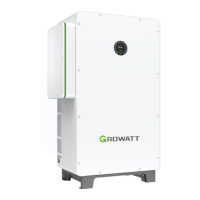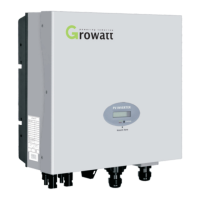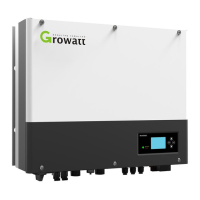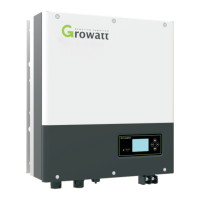NOTE:
1. It is recommended to charge batteries with grid power during off-peak times and discharge
battery power during peak hours to lower your electric bills.
2. The working modes listed above are applicable to the grid-tied power system. For the off-grid
system, the WIT Inverter converts battery power to power the loads.
7.2.2.2 Operating Mode of WIT 50-100K-H, WIT 50-100K-HE and WIT 50-100K-HU
Load First:
When the WIT inverter works in the Load First mode, the WIT storage unit controls the battery to
charge and discharge according to the amount of electricity fed into the grid and drawn from the
grid. When there is electricity fed into the grid, the WIT inverter adjusts this part of the electricity
to charge the battery, reducing the amount of electricity fed into the grid; when there is power
from the grid, the WIT inverter adjusts the battery discharge to reduce the amount of electricity
drawn from the grid. When the WIT inverter disable the Load First mode, it does not respond to
the change of the power fed into the grid and taken from the grid. It will keep the battery power,
and enters other priority modes.
Battery First:
When the WIT inverter works in this mode, the battery will ignore the forward and reverse current
power and give priority to charging the battery. The user needs to set the mode ON and OFF time.
lf the customer does not enable AC CHG (AC power grid charging function), the WIT will charge
the battery through PV power. If the customer enables AC CHG, the WIT will charge the battery
through PV panel and the grid.
Grid First:
When the WIT inverter works in the Grid First mode, the load will be powered firstly, then export
power to the grid. The user can choose to work in this mode when the electricity rate is high, and
the user needs to set the on and off time of the mode.
7.2.3 Fault Mode
The intelligent control system of the WIT Inverter monitors and adjusts the system status in real
time. When the WIT Inverter detects an alarm, the corresponding status light will turn red and the
OLED will display the alarm. When the WIT Inverter detects a fault, the system status indicator
and the corresponding status light will turn red and the OLED will display the fault. After the fault
or alarm is cleared, the system recovers and all status indicators will be steady green.
NOTE: For details about faults and alarms, please see 9.2 Troubleshooting.
7.2.4 Shutdown Mode
When the battery SOC is lower than the discharge cutoff SOC and the PV string output power
does not meet the requirements for grid-tied power generation, the WIT Inverter will
automatically shut down. In shutdown mode, the inverter still consumes a bit energy
(PV>Grid>Battery) to wait to start up again when the operating requirements are met.

